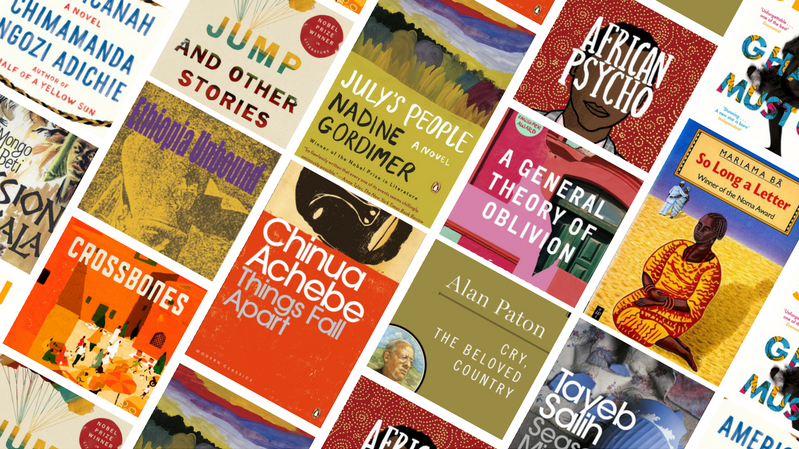For many people, it is hard to believe that African novels have been in existence for over a hundred years. Thomas Mofolo’s Traveller to the East was published in 1907 and long before that, there were mining novels being published in South Africa in the 19th century.
This guide is, in part, an attempt to change this misconception held by many readers that African novels worth reading go only as far back as the 1950s with the publication of Things Fall Apart.
Readers are invited to follow the African novel as it evolves through the decades—taking on different questions, experimenting with forms and ideas, and, at every step, seeking out new ways to stay delightful, relevant, and captivating.
You may have encountered other guides to African novels in the past, but here is what is different about this one. It reinvents African novels for the reader who delights in the pure joy of a good story.
You’ll notice that in describing these novels I focus on what is exciting about the story, the style, or the aesthetic choice that the author makes. I consciously stayed away from describing these novels in terms of their themes or the social issues they explore. The reason for this is quite simple: my goal is to attract readers who want to—in the most cliché sense—fall in love with African novels.
Note: Why is there only one novel per decade? The Guide is an on-going project that I plan to expand on a monthly basis.
***
Pick a Decade
The 1900’s
Traveler To The East
By Thomas Mofolo
1907
Lesotho
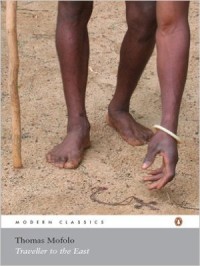 You are about to read one of the oldest African novels.
You are about to read one of the oldest African novels.
Published in 1907, Traveler to the East is more than a century old!
In 1908, a very excited reader wrote this to Leselinyana, the newspaper where Traveler to the East was first serialized: “Oh, that book, my friends! […] I am extremely happy about it.” The story follows the life of handsome but troubled Fekisi.
Living in a Sodom and Gomorrah kind of world where men and women had grown calloused from repeated acts of violence, Fekisi’s pure heart made him a social misfit. It certainly didn’t help that his work as a herdboy gave him way too much time to ask questions about God, life, and nature. Frustrated with the wickedness around him, obsessed with the thought of finding redemption, Fekisi abandons family and land and heads east to a mythical land where he hopes to encounter God.
The charm of the book is Fekisi’s poetic expressions. For a travel story, Traveller to the East isn’t as action-packed as you’d expect. But what it loses in drama, it gains in a gushing poetic intensity. The novel is all about the powerful emotions and intense feelings of a troubled soul conveyed in string of beautiful lyrical moments.
Get this novel here.
The 1910’s
Ethiopia Unbound
By Casely Hayford
Published in 1911
Ghana
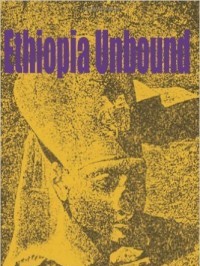 Ethiopia Unbound is a philosophical tale set in London and various cities in Ghana.
Ethiopia Unbound is a philosophical tale set in London and various cities in Ghana.
Kwamankra is a Ghanaian law student. Whitely, his British buddy, studies theology. They couldn’t be more different, except that they both share a fascination with Roman antiquity.
They take long walks along Tottenham Court Road, hang out in Kwamankra’s apartment, and do a whole lot of talking and arguing about everything from Marcus Aurelius to Christ to the African idea of divinity.
Kwamankra and Whitely will both end up in Ghana where the plot continues to drift along meditations and philosophical riffs on freeing Africa from Europe’s capture; hence the title Ethiopia Unbound. Get it? A play on the Greek drama Prometheus Unbound. Like any philosophical tale, Ethiopia Unbound is all talk and no drama. But there’s a sprinkle of fun episodes and anecdotes to keep things exciting.
Get this novel here.
The 1920’s
Chaka
Thomas Mofolo
1923
Lesotho
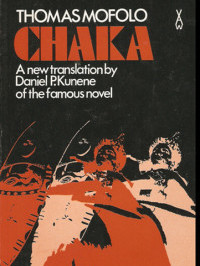 Chaka is a re-imagining of a true-life story about a 19th century Zulu king.
Chaka is a re-imagining of a true-life story about a 19th century Zulu king.
But it is, at bottom, simply a folkloric thriller about a ruthless African king playing at the game of thrones.
Combining spine-chilling violence, military genius, charisma, and a good bit of black magical arts, Chaka conquers surrounding nations and brings the Zulu people under his rule. In a perverse but beautifully dramatic turn of events, Chaka would become captive to his own lust for blood and power. This sets in motion the series of event that would lead to his downfall.
The thread of political suspense in novel is woven around Chaka’s star-crossed love affair with the beautiful Noliwa. As Noliwa would learn—albeit too late—it’s as easy as it is dangerous to fall for a man like Chaka.
Mofolo’s political drama will pull you in to the very last breath!
Get this novel here.
The 1930’s
Forest of A Thousand Daemons
By D. O. Fagunwa
Published in 1938
Nigeria
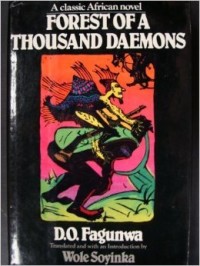 Get set to read one of the most cherished books in the small but rich genre of African fantasy.
Get set to read one of the most cherished books in the small but rich genre of African fantasy.
Forest of A Thousand Daemons follows the story of a hunter named Akara-Ogun. He goes on daredevil expeditions into an old forest haunted by creatures too strange and ghoulish to describe. But because he has just the right amount of luck and magical powers to save him from his reckless wanderings and dangerous encounters, he is able to live to tell some of the most hair-raising stories ever told.
Best for readers with an appetite for supernatural stories about monsters, spirits, and alternate realities.
Wole Soyinka gave the novel a second life when he translated it into English—a project he began while he was in prison.
Get this novel here.
The 1940’s
Cry, the Beloved Country
Alan Paton
Published in 1948
South Africa
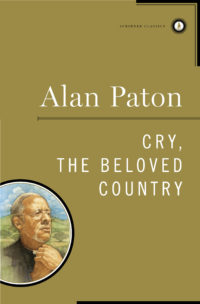 Alan Paton was in a Norwegian Cathedral when he conceived the idea for this haunting novel about a small town Zulu priest and his desperate search for his son in the streets of Johannesburg.
Alan Paton was in a Norwegian Cathedral when he conceived the idea for this haunting novel about a small town Zulu priest and his desperate search for his son in the streets of Johannesburg.
The novel begins with Stephen Kumalo taking a long, arduous journey to Johannesburg to care for his sick sister. When he arrives, things are much worse than he imagined. His son, who’d traveled there to make a better life for himself, has gone missing. Searching for his son takes Kumalo through the devious streets of one of Africa’s most enigmatic cities. But, as he soon finds out, he is not the only one searching for his son who may have committed a very heinous crime.
Paton’s debut novel has been called sad and painful. But this should not stop you from reading it. The novel is less of a chore than you’d imagine. It’s a dark family saga packed with a good bit of drama.
Get this novel here.
The 1950’s
Things Fall Apart
By Chinua Achebe
Published in 1958
Nigeria
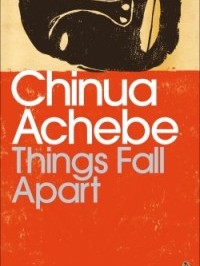 Chinua Achebe was only 25 when he debuted the novel that would make him into an instant literary celebrity.
Chinua Achebe was only 25 when he debuted the novel that would make him into an instant literary celebrity.
The story begins with 18 year old Okonkwo and how he overcomes his lowly station in life to become a rich and famous farmer. But his charmed life goes on a downward spiral when he hacks down his foster son in an act of ritual killing.
Achebe paints the life of a small 19th century African community with broad colorful strokes—ancestral festivals, wedding parties, squabbling co-wives, wrestling matches, beguiling folk tales, and catchy proverbs.
Achebe is a legendary storyteller. His characters are always so real they jump right out of the page at you.
Things Fall Apart was a breakout success when it came out in the late 50s. The world had and has never seen anything like it. After almost 60s years, it continues to thrill millions of readers the world over.
Get this novel here.
The 1960’s
Season of Migration to the North
Tayeb Salih
Published in 1966
Sudan
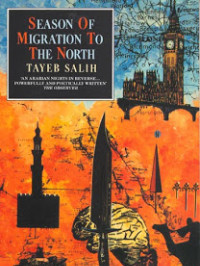 Who can resist a tale of kinky sex and murders!
Who can resist a tale of kinky sex and murders!
Warning bells are set off when Sa’eed, a farmer in a Sudanese village, addresses the narrator with an impeccable Oxford accent.
As the story progresses, it becomes obvious that Sa’eed is essentially a closet full of dark and sordid secrets. The narrator’s attempt to piece the puzzle of Sa’eed’s elusive past draws him into a twisted tale riddled with exotic details of seduction and murder.
Get set for a mind-blowing read that blends the thrill of a crime story with the shock of steamy sex scenes.
Season of Migration to the North continues to be the greatest achievement of Salih’s unmatched gift of storytelling.
Get this novel here.
The 1970’s
The House of Hunger
By Dambudzo Marechera
Published in 1978
Zimbabwe
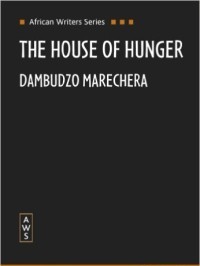
The House of Hunger is not a story. It’s a “literary shock treatment.”
Or, as some readers have noted, reading Marechera’s novella is like “overhearing a scream.”
There is no solid arc to the story. Just a set of disjointed incidents and jarring imageries assembled around a boy on the verge of a nervous break down.
He is joined in this surrealist urban adventure, set in a Zimbabwean slum, by a strange cast of characters—Nester the prostitute, Phillip the Intellectual, Immaculate the abused wife, Edmund the Freedom fighter, Julia the activist, and Patricia the narrator’s white girlfriend.
Marechera’s fragile and deeply unsettling fictional world is best for readers with very unconventional taste.
Get this novel here.
The 1980’s
So Long a Letter
By Mariama Ba
Published in 1981
Senegal
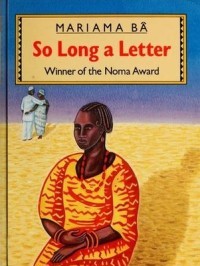 Ba’s purse-size novella is a book of timeless appeal.
Ba’s purse-size novella is a book of timeless appeal.
The plot unravels around two Dakar wives—Ramatoulaye and Aissatou.
In the isolation of mourning, Ramatoulaye pens a long letter to Aissatou now living in far away America.
She chronicles their lives as bright-eyed schoolteachers in 1960s Senegal guided in their social and romantic lives by feminist fervor.
It’s a wonderful telling of what it means to be young, ambitious, and female in late 20th century Dakar—the complications of desiring independence in a world of restraints and of wanting to be loved on your own terms in a world where a man’s desire was considered more legitimate than that of a woman.
So Long a Letter is not just a novel about heartbreak. It is a beautiful homage to female bond and friendship
Get this novel here.
The 1990’s
Secrets
By Nuruddin Farah
1998
Somalia
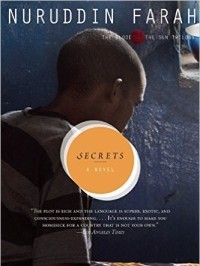 Farah’s dark, family psychodrama is a compelling read.
Farah’s dark, family psychodrama is a compelling read.
When it came out in 1998, the novel marked one of the crowning moments of the 20th century in the African literary scene.
It tells the story of a Somali family straining under the mystery of a past that refuses to be kept secret.
Kalaman is a successful businessman. Sholoongo is a sexy sorcerer. When they reunite after 30 years and she tells him she has to have his baby, Kalaman is freaked out. He retreats into his past bent on confronting the suspicious he’s always had about his origins.
Mogadishu, Somalia’s major city, is dark and dreamy in this story where life shifts uneasily between the world of the spirits, magic, myth and everyday reality.
Secrets is a patchwork of mysterious events woven into layers of sexual tension and magical realism.
Salman Rushdie couldn’t be more accurate when he called Farah “one of the finest contemporary African novelists.”
Get this novel here.
The 2000’s
African Psycho
By Alain Mabanckou
Published in 2003
Congo
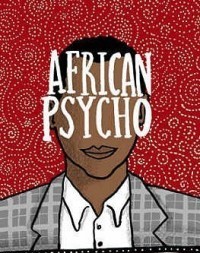 African Psycho begins with the shocking confession: “I have decided to kill Germaine on December 29.” These are the words of ugly Gregoire who dreams of becoming a celebrity murderer.
African Psycho begins with the shocking confession: “I have decided to kill Germaine on December 29.” These are the words of ugly Gregoire who dreams of becoming a celebrity murderer.
He has played and replayed the scene of Germaine’s murder in his head, each time more elaborately brutal than the last. But there is just one problem. Gregoire is too oafish and cowardly to kill anyone.
This contemporary Congolese classic is a humorous stroll through the mind of the most awkward killer-wannabee the world has ever known.
Reading African Psycho is a wild ride through the sordid fantasies of a tortured anti-hero. There is the added pleasure of simply reveling in the aesthetics of murder as scene after scene of possible murders are imagined but never executed.
Get this novel here.
The 2010’s
The Shining Girls
By Lauren Beukes
Published in 2013
South Africa
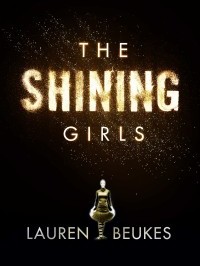 When someone tells you a novel is about a time-traveling serial killer, you stop everything you’re doing and you read it.
When someone tells you a novel is about a time-traveling serial killer, you stop everything you’re doing and you read it.
The Shining Girls the fourth novel by South Africa’s leading speculative fiction writer, is a fast-paced, bone-chilling thriller.
It tells the story of Harper Curtis and the women he brutally murdered. Curtis isn’t your ordinary serial killer. He has this magical ability to go through time, killing women and getting away with it since no one can connect the murders. But his luck runs out when one of his victims survives his deadly assault and swears to take revenge.
The setting, the story, and the characters have nothing to do with Africa. The Shinning Girls is a Chicago story. Beukes is part of a fast-growing circle of African novelists pushing the boundaries on what is an African novel. The fact that she doesn’t have to justify her choice to write an American story captures the experimental culture in the contemporary African scene.
Get this novel here.


